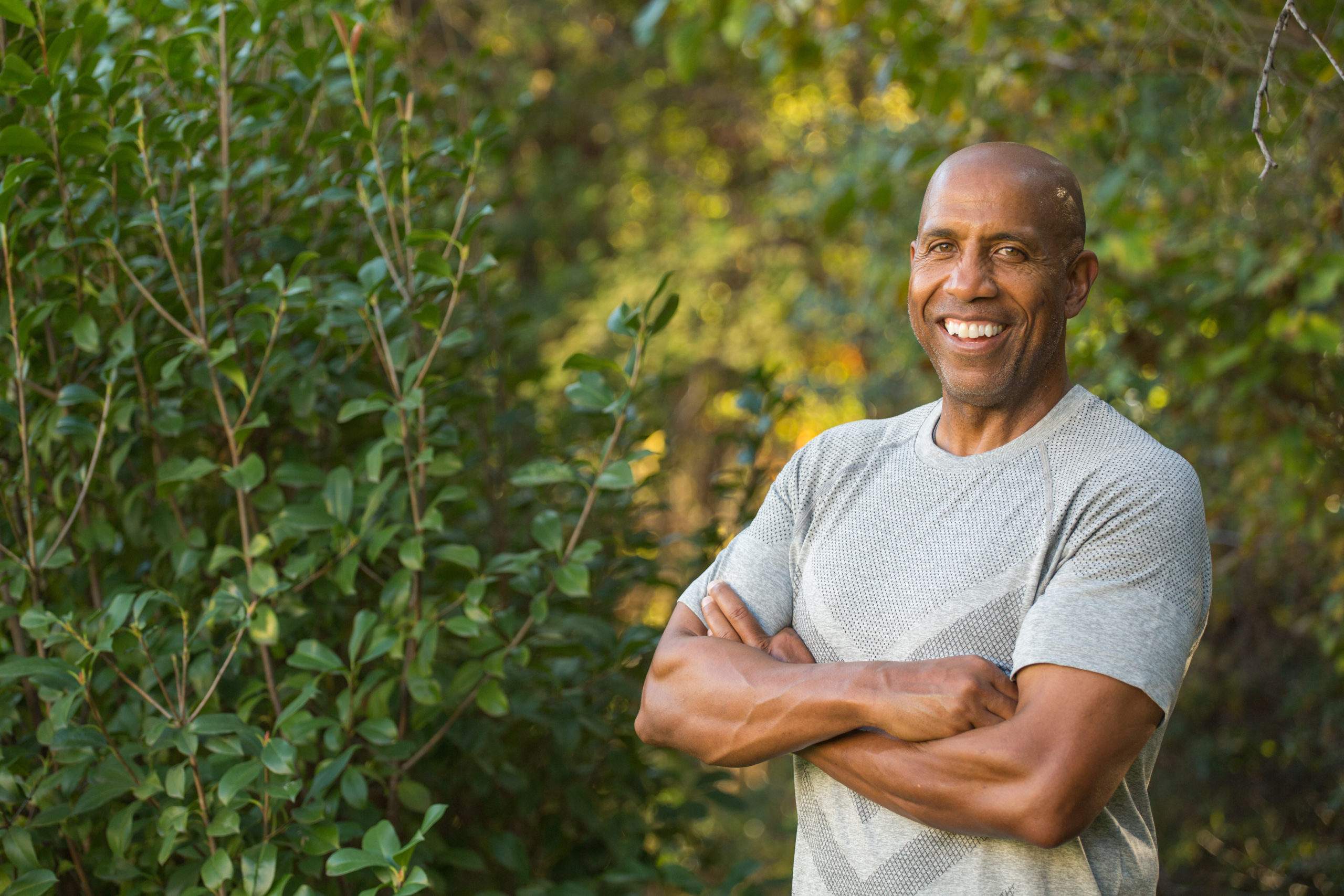In this article we’ll explore the amazing power of breathing practice, and how to get started on your own practice today—with no special equipment, and at no cost.
The breath is a powerful built-in toolkit that, if fully understood, can be used effectively for recovery, resilience, and optimization.
With a basic understanding of how the breath works, and with some practice, you will unlock an array of physical health and performance benefits. These physical benefits include stress reduction, alleviation of anxiety, chronic pain management, and improved sleep.
Let’s dive in.
Benefits of Breathing: Overview
Breathing practice offers literally dozens of physical, mental, and performance benefits. A regular regimen can help you improve your health, recover from injury, maximize your performance, reduce chronic pain or stress, or just plain feel better.
How you breathe—whether fast or slow, shallow or deep, loud or quiet, through the nose or the mouth—makes a huge difference in how you feel, how you focus, and how you respond to everyday situations and challenges.
Exercising the breath is also beneficial for the brain, which literally grows and changes due to intentional breathing and mindfulness work. With regular practice and time, cognitive function, mood, and even attitude or outlook on life will improve, for many, significantly.
Given these enormous and diverse benefits, it makes sense that many athletes and business professionals use breathing techniques to increase their energy and maximize performance. Ready to learn a few more specifics?
Stress & Anxiety
When done correctly, breathing exercises produce a series of physical changes that help to reduce stress and minimize anxiety.
Long, deep, abdominal breathing elicits the body’s “relaxation response,” a physiological behavior observed, described and measured by Dr. Herbert Benson of Massachusetts General Hospital. When we breathe deeply and slowly, and with mental focus on the breathing movement, the parasympathetic nervous system activates and peripheral “noisy” brain activity subsides. These physiological responses in turn lowers blood pressure, inhibit stress hormones, relax the mind, and reduce inflammation in the body.
Deep breathing is in fact great for heart health, one of the body parts most taxed by high stress lifestyles. With the proper techniques breathing can quickly lower heart rate and blood pressure, balance oxygen and CO2 in the bloodstream, calm agitated nerves, and reduce general tension in the body.
Sleep and the Breath
Many people unfortunately turn to pharmaceuticals or over-the-counter sleep aids to fight insomnia. Yet there is a far healthier, natural antidote to sleeplessness: mindful breathing.
Mindful breathing practices relax the body and quiet the mind, creating the conditions for deep and restful sleep. As with stress reduction, the process involves activating the body’s innate relaxation response, which is deeply effective in overcoming insomnia.
One breathing technique for sleep involves using a measured count, which produces a hypnotic effect—sort of like a supercharged version of counting sheep. With regular practice, one can learn to slide into a sleep state easily and naturally, typically in just a few minutes.
Pain and the Breath
Intentional breathing is also a proven, non-invasive and natural way to manage chronic pain. Studies show that breathing, mindfulness and light movement practice can rapidly reduce pain by forty percent or more.
Multi-modal pain treatment plans are increasingly the norm in medical practice, with many physicians prescribing chronic pain patients a combination of mind-body, physical therapy, and pharmaceutical treatments. Intentional breathing can and should be a part of the mix for most people. Multi-modal therapy represents the frontier of non-pharmacological pain management.
Mental Health
Mindful breathing is also a form of mental exercise that enhances cognition, improves mood, and reduces cyclical or repetitive negative thought processes.
Breathing practices help mental chatter and background noise fade away, creating conditions for improved concentration, clarity, and mental focus.
Breathing practices can also incorporate other forms of mindfulness training, meditation, and cognitive behavioral techniques that literally re-program your brain to control knee-jerk reactions and reduce or eliminate negative sensations and feelings.
High Performance
For those looking for a professional or athletic edge, breathing practice is a tremendous tool to add to one’s arsenal. Effective breathing is at the heart of physiological performance and optimization, including expansion of your VO2 max score—a key and universal performance indicator in competitive sports.
What’s more, breathing practices are often combined with visualization techniques to improve flow-state, and have been used successfully by many of the greatest athletes in the world.
In a professional context, breathing helps us focus, manage emotions, stay alert, and maintain energy levels throughout the often long workday.
The Science of Breathing
Although the breath doesn’t come with instructions, people around the world have been studying the effects of breathing practices for thousands of years. And in recent years, medical science has begun to understand how and why breathing works the way it does.
So how exactly does breathing practice work? And why is it different from the twelve to fifteen thousand breaths we take each day?
It is useful to start by understanding the scientific underpinnings of the respiratory process, which can help you maximize the effectiveness of your practice. Let’s start by briefly reviewing the respiration process.
Respiration is the process by which the body draws in oxygen from the atmosphere, delivers it to your cells and tissues, and then expels carbon dioxide produced by your tissues back into the atmosphere.
Two powerful organs—the heart and the lungs—work together to maintain a steady stream of oxygen into the body via the bloodstream, while making sure the blood comes back through the lungs so that carbon dioxide and other toxins can be expelled during exhalation.
Breath: The Body’s Energy Source
At a fundamental level, respiration provides energy and fuel for the body.
Each inhalation pulls oxygen into the lungs, where it is absorbed into the bloodstream and transported to each area of the body via our red blood cells, specifically by a blood protein called hemoglobin.
Oxygen is used by the body to burn sugars and fatty acids in our cells, which produces a form of energy called ATP, or adenosine triphosphate.
This process of oxygen-fueled energy creation in our cells is often referred to as cellular or aerobic respiration, and it’s probably humanity’s most important bio-chemical process. It powers all of the cellular processes in the human body.
The important thing to remember is this: Physical and mental health—and life itself—depend upon a constant flow of oxygen throughout the body.
By optimizing your breathing mechanics, you will naturally increase the oxygen-carrying capacity of your bloodstream, and give your mind and body greater fuel for enhanced performance.
Breathing techniques directly impact
the body’s ability to maintain optimal and safe
oxygen and carbon dioxide levels.
The breath, of course, is the mechanism by which we deliver oxygen to our bodies. Let’s discuss how to breathe properly to maximize physical and mental health and achieve high performance.
How to Breathe Properly
Deep breathing is like a built-in health regulator.
Breathing is one of the few bodily functions that is both conscious and unconscious. While most of the time breathing is regulated automatically by our autonomic nervous system, it can also be consciously controlled. This is what we do when we “practice” intentional breathing.
The way you breathe has an immediate effect on the stress levels in your body and mind. Consciously altering your breathing patterns can actually create either a stress or relaxation response in your body.
For example, if you hyperventilate—by taking short, shallow breaths for an extended period of time—you will induce a state of panic and your body will take on all of the physiological markers of a fight-or-flight stress response, including elevated blood pressure and heart rate, increased adrenaline, and release of cortisol and other stress chemicals that increase physical inflammation (among other bad side effects).
Conversely, consciously slowing down your breath and focusing your mind on the act of breathing tricks your body into entering a deeply relaxed state. It triggers the body’s parasympathetic nervous system “relaxation response,” which elicits a series of beneficial physical effects such as a loosening of muscles, reduced heart rate, suppression of stress hormones, and the release of soothing chemicals such as oxytocin from the pituitary glands. The result is deep physical relaxation and a feeling of well-being or tranquility.
Two Core Breathing Principles
While there is not necessarily a single correct way to breathe, and there are many different ways to breathe for good health, you should start your journey by following two basic principles:
1) Breathe mostly through your nose. Air that comes in through the nose is filtered and conditioned, making respiration more effective and particle free. It’s also much better for your teeth and gums to breathe through your nose. (If you have a cold, of course, you may have no choice but to breathe through your mouth!)
2) Breathe from your belly, side ribs and back, and minimize movement in your shoulders and chest (more on this below).
What Is Diaphragmatic Breathing?
When we refer to breathing from the belly, we’re really talking about engaging a core muscle called the diaphragm. Diaphragmatic breathing is really just normal breathing. Most infants breathe naturally from their bellies, and adults should breathe that way most of the time, too.
The diaphragm is a thin and specialized muscle that divides the abdomen from the chest. When you inhale, the diaphragm contracts and flattens, which opens up the chest cavity and allows the lungs to fully expand and pull in oxygen. During exhalation, the diaphragm relaxes and the air is pushed out of the lungs.
Deep, diaphragmatic breathing—also called abdominal or belly breathing—is a foundation for proper breathing technique and good physical health. When we have good posture and breathe from our belly, we help our lungs to fill completely with oxygen, and we naturally reduce movement in the shoulders and avoid puffing out the chest.
By contrast, breathing from the chest or shoulders does not fully engage the diaphragm, resulting in smaller inhalations and reduced oxygen in the bloodstream.
Many people develop bad habits over time that restrict the movement and engagement of the diaphragm, or that emphasize breathing movement in the lungs or shoulders instead of the belly. This results in quick, shallow breathing patterns that don’t fully oxygenate the body and brain.
When we do engage the diaphragm, and, with practice, strengthen movement and control, our breathing patterns deepen and elongate, and we experience the tremendous physical and mental benefits of fully oxygenating our bodies.
A well-developed diaphragm also allows you to inhale and exhale smoothly, evenly, quietly and at different speeds, which is at the root of breathing practice, and critical for long relaxing inhalation and exhalation patterns you’ll learn (in this article or elsewhere).
Don’t worry—anyone can train the diaphragm to work more efficiently and responsively for optimal results. With a little practice, it will quickly become second nature.
When I Breathe in Should My Stomach Go In or Out?
This is a frequently asked question by beginning practitioners of breathing. Most of the time the belly should move slightly out upon inhale, and pull in slightly upon exhale. This aligns with the natural movement of the diaphragm and ribs, and when done as part of a breathing practice also improves core strength.
But keep in mind there are also advanced breathing techniques that intentionally reverse abdominal movement, which offers a nice counter-movement that can also stretch and strengthen the core, and builds additional physical and mental control of the breathing apparatus. Don’t worry about this until you’ve been practicing for a while!
Breathing Techniques and Exercises
There are literally hundreds of different types of breathing techniques and patterns, but here are a few of the most common patterns and techniques used for health purposes.
Balanced Breath
Although it sounds simple, learning to make inhale and exhale of equal duration requires mindfulness and focus, and is excellent for balancing oxygen levels in the bloodstream.
Long Exhale
Our bodies are hard-wired to physically relax when we use a long exhalation, and with practice we can learn to use the long exhalation for extended periods of time, increasing our capacity for self-induced relaxation.
Bellows or Bastrika
Short, quick breaths are often used to build heat and energy in the body, wake up the mind, and there’s some evidence that these techniques – which are common in some forms of yoga – help in detoxifying the body.
Breath Holds
Breath holds are used in a wide variety of exercises, but they deserve their own mention because they are critical to building lung capacity and diaphragmatic control. One of the more popular patterns used for sleep is the 4-7-8 breath, in which the breath is held for seven seconds in between inhale and exhale.
Box Breath
The box breath is a classic relaxation technique that adds a breath hold before and after inhale. Once you learn the pattern, you’ll understand why its often called the box breath.
Breath Ladders
Breath ladders are used to practice longer routines in which simple patterns are varied, often in a step-by-step manner. They require mental focus and strong breath control skills.
Sips and Puffs
Breaking the inhale and exhale into multiple short sips and puffs of air increases diaphragmatic control and expands lung capacity. It’s also useful to help open up the nose when you are feeling a little stuffy.
Happy breathing!




